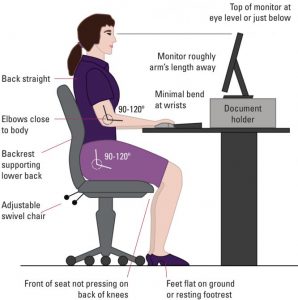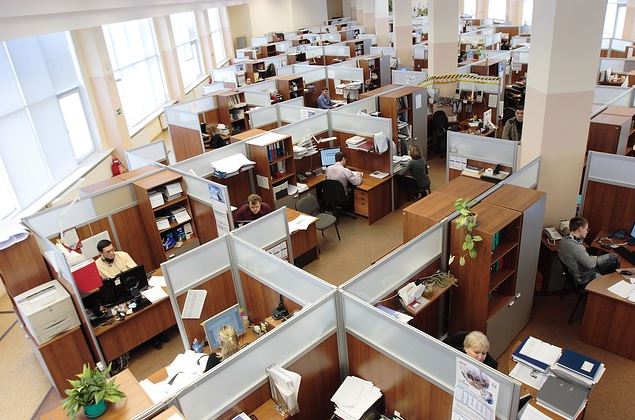Are you looking for a way to improve productivity in your workplace as well as the quality of your products? You can improve productivity in your workplace through the establishment and improve ergonomic processes in your place of work. In fact, most leading companies integrate ergonomic deeply in their operations.
What is workplace ergonomics?
Workplace ergonomics is the science of the workplace while putting into accounts the capabilities and limitation of every worker. Poor workplace ergonomics leads to fatigued, hurting workers and frustration, which lower workers performance and lower productivity in the workplace. Systematic ergonomic improvement helps to reduce risk factors that can lead to musculoskeletal injuries and help to improve workers performance and productivity. Through workplace ergonomic improvement, you eliminated barriers and ensure maximum safety in the workplace.
The importance of applying ergonomics in the workplace

Guidelines for an ergonomic workstation.
Properly designed and equipped work environment is an important priority of every company. The most organization relies on a computer for designing products and controlling production processes. The sedentary nature of a dedicated computer work, the fast working pace and the long work hours can lead to musculoskeletal strain. This can lead to stress-related problems that can result in absenteeism and insurance claims.
Making an Efficient Workplace
Ergonomic designs help to boost the productivity in the workplace, improve morale, and reduce the number of absenteeism as well as lower medical costs. Start by analyzing the current computer work environment of different workers. Check whether lighting temperatures and ventilation are adequate. Are communication devices adequate and accessible? How is the floor and storage area of the workplace? The best way of gaining insight of the worker’s environment is to observe, evaluate and review various maintenance records. The settings of the computer hardware can also impact the productivity of the worker. Large workstations, PCs, printers, monitors and peripheral devices may crowd the place. Here are some of the ways of improving economic of your workplace:
Improve the lighting
Studies show that standard lighting is too bright for a computer environment and suggest that a level range of between 25 to 75-foot candles is good for a computer area. Overhead lighting and natural light can also lead to reflected glare from computer screens, leads to distractions, eyestrains, and even neck pain.
Temperature Control

The plight of office thermostats are known by many, but having stable, comfortable temperatures is crucial to an efficient workplace.
High temperatures and inadequate ventilation are some of the most reported and frequent workplaces complaints. While designing computer working area, keep in mind that computers generate a lot of heat. To improve ventilation and temperature condition in the working area, use cooling and heating systems to control the temperature of the office. You also need to periodically inspect and clean ductwork.
Furniture
You need to provide proper furniture that matches operators’ needs to help enhance productivity, comfort, and safety. Design, shape, and size of the furniture should match the needs of the user. If flexibility is necessary, the freestanding unit can be the best choice. Consider the needs of the operator such as storage, work surface, and accessories.
Computer Equipment
One of the most commonly cited reasons for workplace discomfort and/or repetitive stress disorder is the computer equipment (including desk and chairs) that make up the workstation. It’s important to take ergonomics into account when it comes to all aspects of the workstation, including the computer chair, the computer keyboard, a specially designed ergonomic mouse, of the height and shape of the desk. Standing desks are also becoming very popular, although you should be careful to alternate between sitting and standing.
Seating posture
The design of the chair determines the seating posture of the operator, which affects his comfort and productivity. If the work surface is fixed, then the chair should be adjustable to avoid various physical disparities between operator and keyboard. Avoid buying a chair without checking properly. Ask your dealer to provide a sample first before buying the furniture.







